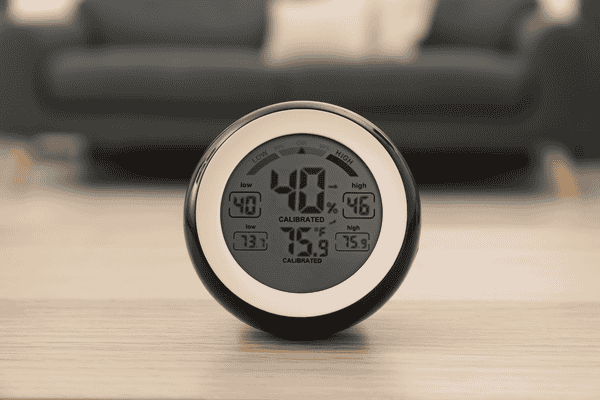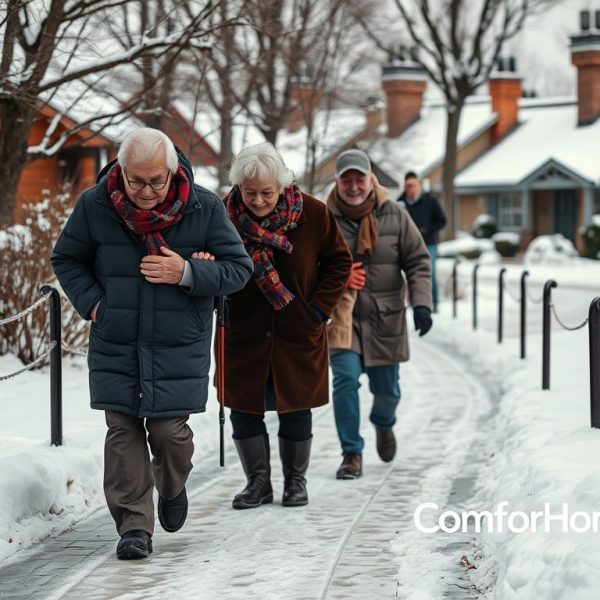The wind was picking up outside as 75-year-old Mr. Robert Dawson sat comfortably in his living room, wrapped in a cozy blanket. His daughter, Emily, was visiting for their usual Sunday lunch. But today, instead of their regular chit-chat, Emily had something else on her mind. Over the past couple of months, Robert had caught more than one cold, which was unusual for him.
“Are you feeling okay, Dad?” Emily asked, a note of concern in her voice.
Robert waved his hand dismissively. “I’m fine, just been getting the sniffles a bit more lately.”
But Emily wasn’t convinced. As someone who worked as a nurse, she understood that the elderly were more vulnerable to seasonal colds and flu. And, considering how carefully she managed her father’s medications, diet, and exercise routine, she couldn’t help but wonder what was causing his increased susceptibility to illness. That’s when she had an epiphany: indoor air quality, particularly humidity levels, might be playing a significant role.
The Connection Between Indoor Humidity and Immune Health
For seniors like Robert, maintaining a healthy immune system becomes increasingly challenging with age. The body’s defenses weaken, making it harder to fend off common illnesses like colds and the flu. But what many people don’t realize is how much the air they breathe—especially in indoor environments—can affect their health.
As Emily began to investigate further, she learned about the relationship between indoor humidity levels and respiratory health. Dry air, particularly in the winter months when heating systems are running full blast, can dry out the mucous membranes in the nose and throat. These membranes play a critical role in trapping viruses and bacteria before they enter the body. When they dry out, however, their effectiveness weakens, leaving elderly individuals more prone to infections.
This was likely the culprit behind Robert’s recent health struggles. Emily realized that the low humidity in his home was making it easier for airborne viruses to take hold.
Why Humidity Matters for Seniors
Maintaining optimal indoor humidity levels is especially important for the elderly. Seniors often spend more time indoors, particularly during cold weather or flu season, increasing their exposure to indoor air that may be too dry or, in some cases, too humid. Both extremes can negatively impact their health.
Here’s why humidity balance is key to a senior’s well-being:
- Dry air weakens immune defenses: As Emily suspected, when the air in a home is too dry (below 30% humidity), it dries out the respiratory tract. This weakens the body’s natural ability to filter out harmful particles like bacteria and viruses.
- Moist air supports better breathing: Proper humidity (ideally between 40% and 60%) helps keep mucous membranes moist, improving their ability to catch harmful microbes and flush them out before they cause infection.
- Reduced spread of viruses: Scientific studies show that viruses like the flu thrive in dry air. Maintaining higher humidity levels can decrease the survival rate of these viruses, reducing the likelihood of them spreading in the home.
- Skin health and comfort: Dry air doesn’t just affect the respiratory system. Seniors often suffer from dry skin, and inadequate humidity can worsen this condition, leading to cracks, sores, and increased susceptibility to skin infections.
- Joint and muscle comfort: For seniors with arthritis or other joint issues, dry air can exacerbate discomfort and stiffness, while proper humidity can help alleviate some of these symptoms.
Emily’s Action Plan: Improving Indoor Humidity
After learning about the importance of indoor humidity, Emily was determined to help her father feel better by improving the air quality in his home. She knew that achieving the perfect balance wasn’t difficult, but it required a bit of attention to detail.
First, she invested in a hygrometer, a small and affordable device that measures indoor humidity levels. Emily set it up in Robert’s living room, where he spent most of his time. To her surprise, the humidity level was just 20%, much lower than the recommended range of 40% to 60%.
Armed with this knowledge, Emily decided to implement the following changes to bring Robert’s home back to a healthier range:
1. Humidifier Use
The first step Emily took was purchasing a quality humidifier. She chose a model that could handle the size of Robert’s living area and was easy for him to maintain. Humidifiers work by adding moisture to the air, helping to balance the humidity levels and prevent the dryness that had likely been contributing to his recent colds.
Emily explained to her father the importance of keeping the humidifier clean to avoid the growth of mold and bacteria, which could create other health issues. Together, they set up a schedule for regular cleaning and water changes.
Within a few days of using the humidifier, Robert already noticed a difference. His nose wasn’t as dry, and he felt like he could breathe more easily.
2. Ventilation Improvements
While it’s important to add moisture to the air, it’s equally important to ensure proper ventilation. Emily opened windows periodically to allow fresh air into the house. This prevented the air from becoming too stagnant, which can also lead to respiratory issues.
She reminded Robert that during milder autumn days, it was beneficial to open a window or two, even for just 15 minutes. This would help circulate fresh air and prevent the indoor environment from becoming too moist or stuffy, which could create a breeding ground for mold.
3. House Plants as Natural Humidifiers
Emily loved the idea of incorporating house plants into her father’s home, not just for aesthetic purposes, but also because certain plants naturally release moisture into the air. Together, they chose a few low-maintenance plants like Boston ferns and peace lilies, which thrive in humid environments and release water vapor.
Robert enjoyed having the greenery in his home, and the plants did double duty by helping to keep the humidity balanced while also improving indoor air quality.
4. Monitor Temperature Settings
During her research, Emily also learned that the temperature inside a home affects humidity. Higher temperatures can dry out the air, so Emily worked with Robert to find a comfortable balance between warmth and humidity. She adjusted the thermostat to ensure it wasn’t too high, which would have caused the air to dry out.
By keeping the indoor temperature around 20°C (68°F), they were able to create a comfortable environment that supported the right humidity levels without making the air too dry or too warm.
5. Sealing Drafts and Insulating Windows
One of the reasons Robert’s home had such low humidity was the presence of drafts. Emily noticed that certain windows were letting in cold air, which was contributing to the dryness in the house. They decided to seal drafts and insulate windows to maintain a more consistent indoor environment.
Not only did this help with humidity, but it also improved energy efficiency, reducing heating costs during the colder months. For Robert, who was on a fixed income, this was an added bonus.
6. Balancing Humidity in the Bathroom
The bathroom was another area of concern. Emily explained that excess moisture in the bathroom after hot showers could lead to high humidity and mold growth if not properly managed. She installed a bathroom fan and encouraged Robert to use it during and after showers to maintain balance in the home’s overall humidity.
A Healthier Home, A Healthier Robert
Over the next few weeks, Robert felt like a new man. His chronic colds seemed to fade away, and he was breathing more comfortably. He even noticed that his skin wasn’t as dry, and his joints felt better. Thanks to Emily’s dedication to learning about indoor humidity, Robert’s home had become a healthier environment, supporting his immune system and overall well-being.
As fall turned into winter, Robert felt more prepared than ever to face the colder months. By balancing the humidity levels in his home, he and Emily had taken an important step toward protecting his health, especially during flu season.
Conclusion: The Importance of Indoor Humidity for Seniors
For elderly individuals like Robert, maintaining optimal indoor humidity levels can have a profound impact on their health. From preventing respiratory issues to enhancing immune defenses, the right balance of moisture in the air helps seniors stay healthy and comfortable throughout the year.
By taking simple steps like using a humidifier, improving ventilation, and keeping an eye on temperature and humidity levels, caregivers and loved ones can create a safer, healthier environment for seniors. Emily’s story is a reminder that small changes can make a big difference—especially when it comes to protecting the health and well-being of those we care about most.








